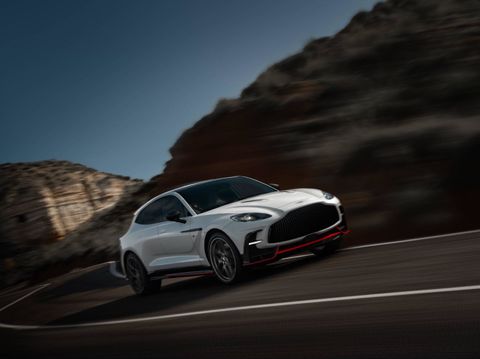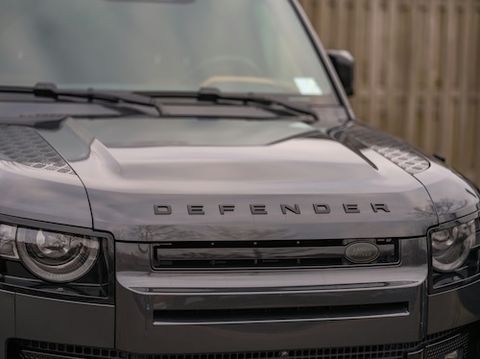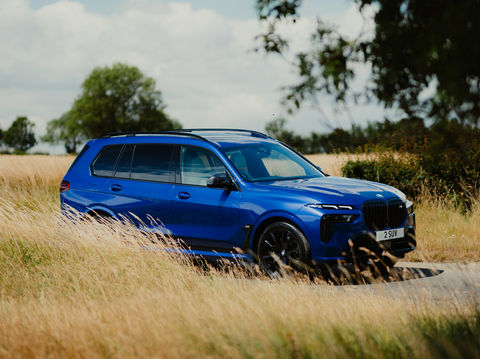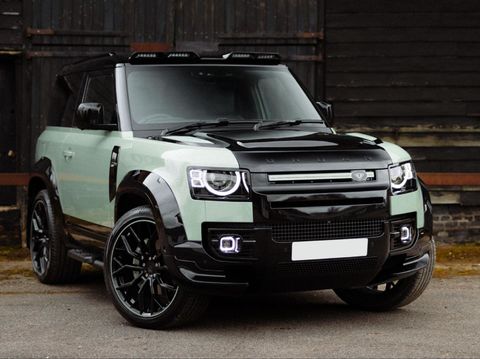Aston Martin DBX S: An Evolution of the Performance SUV

Aston Martin has announced the arrival of the DBX S, a new version of its luxury SUV that builds on the foundations of the DBX707. The DBX S introduces increased power, reduced weight and a range of design and engineering updates, while continuing Aston Martin’s tradition of ‘S’ models that deliver enhanced performance and specification.
Image Credit: Aston Martin
Power And Performance
At the centre of the DBX S is a revised 4.0-litre, twin-turbocharged V8 engine. This version produces 727PS and 900Nm of torque, which is 20PS more than the DBX707. The engine incorporates technology derived from Aston Martin’s Valhalla supercar, including larger compressor wheels and internal changes that improve performance at higher revs.
Acceleration from 0–62mph takes just 3.3 seconds, with 0-124mph reduced by 0.3 seconds compared to the DBX707. The top speed remains unchanged at 193mph. A modified exhaust system enhances the engine sound, offering a deeper and more prominent tone under acceleration.
The DBX S continues to use Aston Martin’s 9-speed ‘wet clutch’ transmission, capable of distributing torque variably between the front and rear wheels. This system can deliver up to 100% of torque to the rear wheels, contributing to the SUV’s controlled handling characteristics. In DBX S, the gearbox software has been revised to enable quicker upshifts and more assertive downshifts in Sport and Sport+ modes.
Weight Reduction And Chassis Improvements
Weight saving has been approached selectively, focusing on elements that affect dynamics. One key change is the introduction of an optional carbon fibre roof. This large single-piece panel removes 18kg from the upper section of the vehicle, lowering the centre of gravity and improving stability.
Magnesium wheels are offered for the first time on any SUV, reducing unsprung mass by 19kg compared to the standard 23-inch forged aluminium wheels. Additional options such as a polycarbonate honeycomb grille and the deletion of roof rails contribute further to the total weight reduction, offering a maximum saving of 47kg compared with DBX707.
The steering ratio has been increased slightly by 4%, making the car more responsive without introducing nervousness into the handling. The turning circle is also reduced to 12.0 metres, improving manoeuvrability.
The DBX S benefits from updates made to the suspension system in 2024, including revised air springs and electronic dampers. These changes reduce body movement and enhance ride comfort and cornering stability. Electronic roll control keeps body roll to 1.5 degrees in corners, while variable spring rates help distribute weight more effectively through bends.
Braking is provided by carbon ceramic discs, 420mm at the front and 390mm at the rear, offering consistent and durable stopping power.
Exterior Design And Aerodynamics
Visually, the DBX S introduces subtle updates. At the front, a black vaned grille is standard, while an optional polycarbonate honeycomb grille provides an alternative, influenced by the design seen on the DBS 770 Ultimate. A revised splitter and rear diffuser improve airflow and cooling, while also giving the car a more functional appearance.
New side sills include integrated air splitters, which are designed to channel airflow more effectively along the sides of the vehicle. Carbon fibre can be specified for the mirror caps, side strakes and lower doors. Distinctive ‘S’ badging appears on the front wings, with red enamel infill referencing previous S models such as the V12 Vantage S and Rapide S.
At the rear, quad exhaust outlets are now vertically stacked, available in gloss or matt finishes. The rear bumper and diffuser have been redesigned, and carbon fibre elements can be specified here to reduce weight by a further 7kg. A new lower livery design is available in Rosso Corsa Red, Trophy Silver or Podium Green, visually tying together the splitter, sills and diffuser.
Interior Updates
The cabin features a specific ‘S’ styling theme. Herringbone seat patterns are standard and can also be applied to the headlining when the carbon roof is selected. The seats use lightweight Alcantara on central areas, with semi-aniline leather in high-contact zones for durability. A full semi-aniline leather interior is available as an option.
Red seatbelts can be specified, and the ‘S’ emblem is embroidered on the seats. The Aston Martin wings are pressed into the leather of the headrests using a combined embossing and debossing technique for precision. The same ‘S’ insignia also appears on the engine plaque and treadplates.
Infotainment And Audio
DBX S includes Aston Martin’s latest in-house infotainment system, introduced across the core model range in recent years. The system integrates with a redesigned dashboard layout and offers an updated user interface focused on clarity and ease of use.
A 800W, 14-speaker Aston Martin Premium Audio system comes as standard. For those who require a higher specification, an optional 1,600W, 23-speaker Bowers & Wilkins system is available. It includes features such as Continuum® midrange drivers, aluminium tweeters, and 3D headliner speakers, tailored specifically to the DBX S’s interior dimensions and materials.
The Aston Martin DBX S continues the marque’s tradition of producing lighter, more focused versions of existing models under the ‘S’ designation, a practice dating back to the DB3S in 1953.
For drivers seeking an SUV that offers improved responsiveness, a refined design and subtle enhancements over the DBX707, the DBX S provides a well-rounded and capable option.



